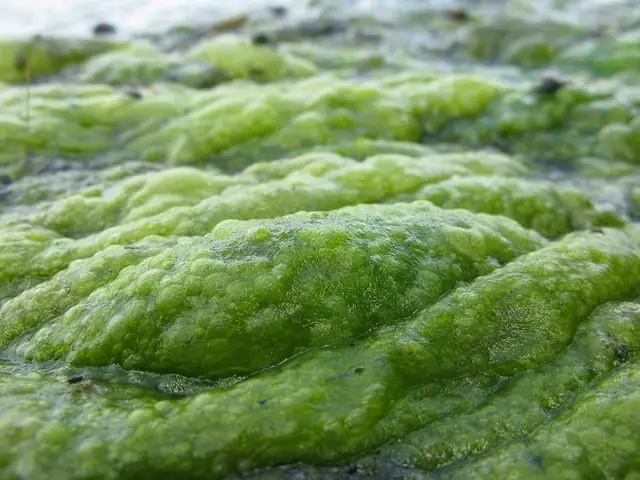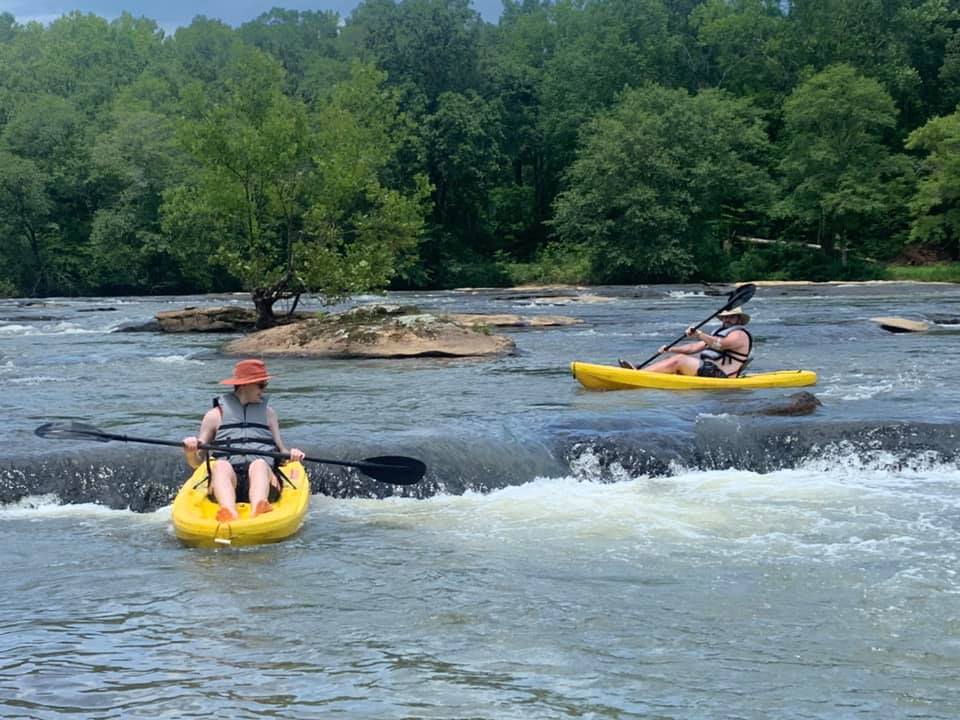Toxic blue-green algae became a hot topic recently when 4 dogs in the southeast died abruptly after swimming in contaminated lakes. While no reports of toxic algae have surfaced about Lake Hartwell, it’s best to understand what the risks are and how to identify this menacing substance.
So today we’re taking a deep dive into what toxic algae is and whether Lake Hartwell residents and visitors should worry.
What is toxic blue-green algae?
There are several types of algae that grow in lake waters and the majority of them are not harmful. It’s just when certain conditions cause an overgrowth in cyanobacteria that leads to a toxic environment. The real danger in this toxic substance is that pets are likely to ingest it when drinking from the lake, and symptoms of liver failure can start within 30 minutes. Many pets will die before appropriate care can be taken to reverse the illness.

Some say cyanobacteria growth looks like paint floating on the water. Image
Where does toxic algae form?
Toxic blue-green algae can arise in both fresh and marine water whenever there is abundant phosphorus and nitrogen, and blooms have been observed in all 50 states. Algal blooms occur in hot weather and stagnant areas are more prone to rapid growth of toxic algae. Any body of water can form this toxic growth, so if you have a pond, lake, or even a pool on your property be aware of how to prevent and identify this nasty substance.
Has it been identified in Lake Hartwell?
The recent reports of animal deaths associated with toxic algae were from Lake Allatoona in Bartow County Georgia and a small pond in North Carolina. But blooms can show up rapidly in previously clean areas, so it’s important to always keep your eyes peeled for evidence of toxic blooms.

Algae blooms appear when there is excess nitrogen and phosphorus in the water. Image
How to identify harmful algal blooms
Toxic algae may be bright blue/green in color, but it can also appear red or brown. You may notice foam, scum, or thick build-up of algae on the water surface. The algae growth may also have a terrible stench that is foul to humans but can be attractive to dogs. If you see any dead fish or other animals nearby, you should suspect toxic algae, but you can’t always tell by looking if harmful algae are present. Always use caution if you’re not sure.
Symptoms of poisoning
In high concentrations, toxic algae can be harmful to humans, dogs, and other animals. Small animals and babies are at the highest risk of algae poisoning. Dogs who ingest even just a few licks of infected water can have symptoms appear within minutes. Humans can be exposed by drinking or swimming in contaminated water.
The first signs of toxic algae poisoning in humans include:
-
Fever
-
Headaches
-
Nausea and vomiting
-
Stomach cramps or diarrhea
-
Skin rashes and blisters
-
Flu or allergy-like symptoms
The first signs of toxic algae poisoning in dogs include:
-
Drooling
-
Vomiting
-
Yellow eyes (jaundice)
-
Weakness
-
Trouble breathing
-
Seizures
-
Coma
What to do if you suspect algae poisoning

Toxic algae can cause rashes and blisters your skin. Image
If you or your pet have toxic algae on your skin, wash it off right away with fresh water and call your doctor. If you suspect your pet has ingested toxic algae, head to the nearest emergency veterinary hospital immediately.
How to keep your pet safe at the lake
-
Learn to identify toxic algae
-
Keep your pet on a leash if necessary
-
Provide drinking water (not lake water) for your pet
-
Identify the nearest emergency clinic
Who to call to get samples tested
To get samples from your property or local water sources tested for harmful algal blooms, get in touch with your local environmental agency.
-
South Carolina: Department of Health and Environmental Control
-
Georgia: Environmental Protection Division







